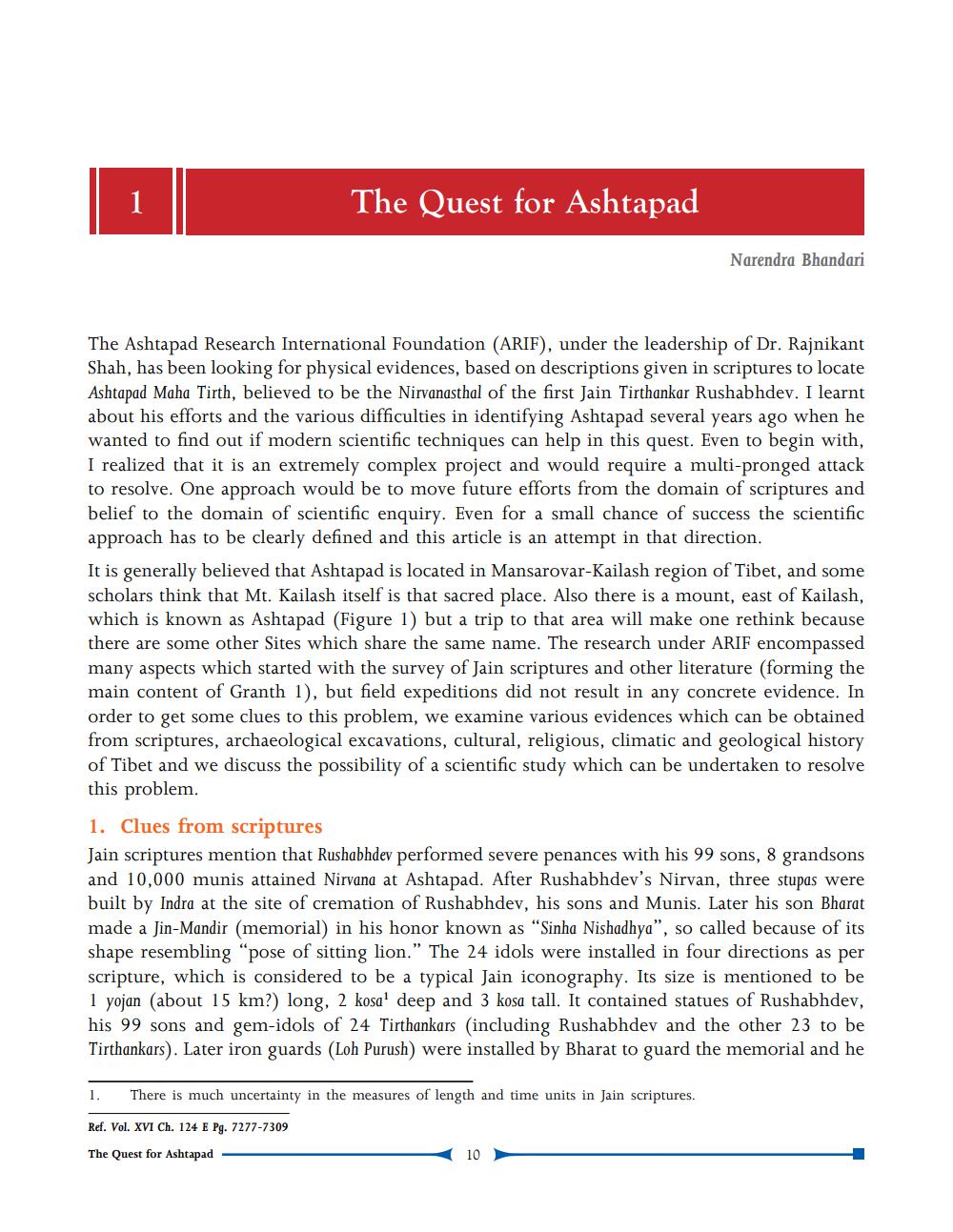________________
The Quest for Ashtapad
Narendra Bhandari
The Ashtapad Research International Foundation (ARIF), under the leadership of Dr. Rajnikant Shah, has been looking for physical evidences, based on descriptions given in scriptures to locate Ashtapad Maha Tirth, believed to be the Nirvanasthal of the first Jain Tirthankar Rushabhdev. I learnt about his efforts and the various difficulties in identifying Ashtapad several years ago when he wanted to find out if modern scientific techniques can help in this quest. Even to begin with, I realized that it is an extremely complex project and would require a multi-pronged attack to resolve. One approach would be to move future efforts from the domain of scriptures and belief to the domain of scientific enquiry. Even for a small chance of success the scientific approach has to be clearly defined and this article is an attempt in that direction. It is generally believed that Ashtapad is located in Mansarovar-Kailash region of Tibet, and some scholars think that Mt. Kailash itself is that sacred place. Also there is a mount, east of Kailash, which is known as Ashtapad (Figure 1) but a trip to that area will make one rethink because there are some other Sites which share the same name. The research under ARIF encompassed many aspects which started with the survey of Jain scriptures and other literature (forming the main content of Granth 1), but field expeditions did not result in any concrete evidence. In order to get some clues to this problem, we examine various evidences which can be obtained from scriptures, archaeological excavations, cultural, religious, climatic and geological history of Tibet and we discuss the possibility of a scientific study which can be undertaken to resolve this problem. 1. Clues from scriptures Jain scriptures mention that Rushabhdev performed severe penances with his 99 sons, 8 grandsons and 10,000 munis attained Nirvana at Ashtapad. After Rushabhdev's Nirvan, three stupas were built by Indra at the site of cremation of Rushabhdev, his sons and Munis. Later his son Bharat made a Jin-Mandir (memorial) in his honor known as "Sinha Nishadhya", so called because of its shape resembling “pose of sitting lion." The 24 idols were installed in four directions as per scripture, which is considered to be a typical Jain iconography. Its size is mentioned to be 1 yojan (about 15 km?) long, 2 kosal deep and 3 kosa tall. It contained statues of Rushabhdev, his 99 sons and gem-idols of 24 Tirthankars (including Rushabhdev and the other 23 to be Tirthankars). Later iron guards (Loh Purush) were installed by Bharat to guard the memorial and he
1.
There is much uncertainty in the measures of length and time units in Jain scriptures.
Ref. Vol. XVI Ch. 124 E Pg. 7277-7309
The Quest for Ashtapad




